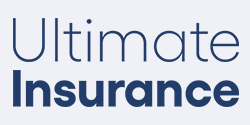The most and least expensive states for car insurance
| Rank | State | Average Premium |
|---|---|---|
| 1 | Louisiana | 2,510.87 |
| 2 | Michigan | 2,098.29 |
| 3 | Oklahoma | 1,869.39 |
| 4 | Montana | 1,857.96 |
| 5 | California | 1,774.41 |
| 6 | South Dakota | 1,772.83 |
| 7 | Washington, D.C. | 1,753.19 |
| 8 | Georgia | 1,751.42 |
| 9 | Illinois | 1,679.15 |
| 10 | Connecticut | 1,678.90 |
| 11 | Arkansas | 1,648.80 |
| 12 | New Mexico | 1,603.65 |
| 13 | Rhode Island | 1,595.97 |
| 14 | West Virginia | 1,589.69 |
| 15 | Alaska | 1,572.21 |
| 16 | Wyoming | 1,552.98 |
| 17 | Maryland | 1,550.13 |
| 18 | Kansas | 1,524.51 |
| 19 | Kentucky | 1,515.30 |
| 20 | Colorado | 1,480.97 |
| 21 | Mississippi | 1,474.94 |
| 22 | New Jersey | 1,473.73 |
| 23 | New York | 1,463.21 |
| 24 | Texas | 1,462.65 |
| 25 | Florida | 1,453.20 |
| 26 | National | $1,429.26 |
| 27 | Pennsylvania | 1,420.78 |
| 28 | Delaware | 1,405.80 |
| 29 | Missouri | 1,390.59 |
| 30 | Minnesota | 1,381.09 |
| 31 | Alabama | 1,380.38 |
| 32 | North Dakota | 1,365.22 |
| 33 | Hawaii | 1,306.97 |
| 34 | Indiana | 1,302.51 |
| 35 | Nevada | 1,282.50 |
| 36 | Washington | 1,279.84 |
| 37 | Utah | 1,234.30 |
| 38 | Virginia | 1,233.36 |
| 39 | Nebraska | 1,210.74 |
| 40 | Oregon | 1,194.69 |
| 41 | Idaho | 1,183.47 |
| 42 | South Carolina | 1,182.18 |
| 43 | Tennessee | 1,170.12 |
| 44 | Arizona | 1,152.50 |
| 45 | North Carolina | 1,130.45 |
| 46 | Massachusetts | 1,043.80 |
| 47 | Iowa | 1,039.04 |
| 48 | New Hampshire | 1,011.23 |
| 49 | Wisconsin | 1,010.93 |
| 50 | Ohio | 999.86 |
| 51 | Vermont | 968.58 |
| 52 | Maine | 902.85 |
Source: Insure.com, from a study commissioned by Insure.com from Quadrant Information Services
Insure.com’s new national survey of car insurance rates reveals that Louisiana has the highest average rates in the nation, followed by Michigan. Maine can boast the lowest average rates.
The results came from a study that collected average auto insurance rates for more than 2,400 vehicles, based on 10 ZIP codes per state and rates from six large carriers, with averages calculated nationally and for each state. This allows you to compare auto insurance prices among the states.
See the most and least expensive 2010 vehicles to insure in an interactive tool.
Louisiana drivers socked by settlements
When asked about Louisiana’s No. 1 ranking, two insurance agents there said they were disappointed but not surprised. And they had a ready explanation: the state’s court system.
In Louisiana, only cases with claims in excess of $50,000 receive a jury trial. “You see lots of settlements at $49,000,” explains Duane Dimattia of Baton Rouge, a director of the Professional Insurance Agents of Louisiana. That sweetens the pot for seeking a claim against an at-fault driver – and insurance companies pay the tab.
With the state’s judges elected rather than appointed, those settlements tend to cater to the public more than they do to legal facts, asserts Richard Clements, a past president of the Independent Insurance Agents of Greater New Orleans.
While an estimated 125,000 vehicles were crushed at Louisiana junkyards in the wake of 2005’s Hurricane Katrina, Clements says that’s not a factor in the state’s high rates. “We really can’t point our finger at Katrina on that, even though we can point to it for many other things.”
In addition to the monetary threshold for jury trials, Dimattia says, Louisiana has traditionally had higher bodily injury rates and more lawsuits per capita than most states. He blames both on the state’s aging roads.
Michigan’s medical bill problem
Like many states, Michigan requires all drivers to have car insurance. Unlike any other state, it offers unlimited medical benefits for the life of accident victims — no matter what policy they buy. Under the system, an individual’s insurance carrier covers the first $460,000 in benefits. Above that amount, a statewide pool (called the Michigan Catastrophic Claims Association) kicks in, which affects the rates of everyone in the state.
“That’s where our biggest expense is,” explains Jon Spalding of Perry, Mich., president of the National Association of Professional Insurance Agents . “If I’m sitting at a stop sign and a motorcycle rear-ends me, my auto policy pays for that motorcyclist’s medical benefits.”
In fact, because of this personal injury protection (PIP) coverage, car insurance has become the primary source of medical coverage, says Spalding.
Michigan’s unemployment rate of nearly 15 percent, the highest in the nation, also plays a role in the state’s car insurance rates. More and more residents are letting their car insurance lapse despite the mandatory coverage law. “It’s a gamble and it can be an expensive one if they get caught,” says Spalding. But “they’re absolutely willing to take that risk.”
Maine: Fewer people, fewer lawsuits
As a large rural state with just 1.3 million residents, Maine has several factors that tend to keep rates down, says Chris Condon, incoming president of the Maine Insurance Agents Association. The largest city, Portland, has just 62,000 residents. The upshot: The average number of annual miles driven is low, commuter mileage is low, and, relative to other states, the Pine Tree State’s highways are not that busy. This helps hold down car crash claims.
Despite its small population, Condon notes that there are at least 30 insurance carriers in the state, so there’s plenty of competition for customers’ business.
But Condon says Maine’s insurance advantage goes beyond just numbers. “It’s a real proud culture,” he explains. In most disputes, Mainers tend to seek fair treatment rather than big money.
“People are less likely to sue than they might be elsewhere,” Condon says, “I think that impacts those rates over time.”
About the rankings: Insure.com’s state rankings reveal the relative cost of insurance among states. Insure.com commissioned a survey from Quadrant Information Services. Average insurance rates were calculated for more than 2,400 vehicles for model year 2010. Rates were based on a 40-year-old single male driver who commutes 12 miles to work. The sample policy had limits of 100/300/50 ($100,000 for injury liability for one person, $300,000 for all injuries and $50,000 for property damage in an accident) and a $500 deductible on collision and comprehensive coverage. The policy included uninsured motorist coverage.
Insure.com’s rankings should not be compared to the annual list of “average expenditures by state” released by the National Association of Insurance Commissioners (NAIC). The NAIC’s list measures what people actually spend, regardless of whether the insurance is cheap or expensive. Insure.com’s list provides a picture of where car insurance is more or less expensive.








